Seeing the Bayeux Tapestry has fulfilled a dream. On of the great works of romanesque secular art, the Tapestry (or more correctly embroidery), tells the story of the events leading up to the Conquest of England in 1066. We visited Bayeux for the first time a few days ago, which is a really wonderful Normandy City a few miles from Caen. There is much to see here both medieval and modern.


The ‘Tapestry’ is crafted by embroidering coloured wool on strips of linen. Much work has been done by scientists on establishing the exact hue, which in my mind is unnecessary. Due to not having excessive exposure to light over the centuries and later restorations the colours have held well. It is Some seventy plus yards long and the main central narrative section is seventeen inches high. This central zone follows the events of the story as a lateral progression. The depiction of the figures, both human and the horses is quite lifelike. There are other images which place the story in perspective like the old Westminster Abbey and Haley’s comet during its visitation in 1066. In common with many medieval manuscript works the borders, above and below are filled with beasts, grotesques, and scenes of normal life such as farming and cooking. The lower border is punctuated by dead bodies and horses below the battle scenes, reinforcing the horror of the action. Above the frieze are a series of numbers attached to each scene.



The Tapestry Museum is set in the ancient palace seminary, itself a wonderful building. I was very excited entering the exhibition to finally see this great work, and was not disappointed either. The superb presentation, well lit behind glass, was enhanced by audio guides which timed everyone through at the same pace – no over-crowding. The commentary was excellent describing each scene. There are three main sections. Initially Harold is sent to France in 1064 by Edward the Confessor to tell Duke William of the dying King’s wish that he should succeed to the English throne He is kidnapped, ransomed and spends time with William, even warring in Brittany, but is forced to pay homage, probably at an earlier Bayeux Cathedral. The second phase follows the death of Edward and Harold usurping the English throne. Harold’s claim was very tenuous, as was Duke William’s and the Norwegian, Harold Hadrada, who Harold defeated. William’s spies inform him of Harold’s breaking of the oath and prepares a fleet to sail to England. The third section shows Duke William’s war preparation and the details of the Battle of Hastings. The battle lasted from dawn to dusk, with the Norman soldiers finally cutting Harold down and the Saxons dispersing, routed.

There is much to take in, what with the story, it’s origins and it’s history. It is a miracle it still exists in complete form. Follow this link to the full on line presentation of the tapestry scene by scene provided by the museum. There is speculation whether it was sewn in England or France. I personally favour the idea of English origins. English manuscripts of the Middle Ages were normally bordered with animals and beasts whereas the French illuminators favoured abstract floral designs. On the first floor is a newly curated exhibition based on the tapestry and especially focussing on how William the Conqueror established Norman rule in England after his coronation on Christmas Day 1066.
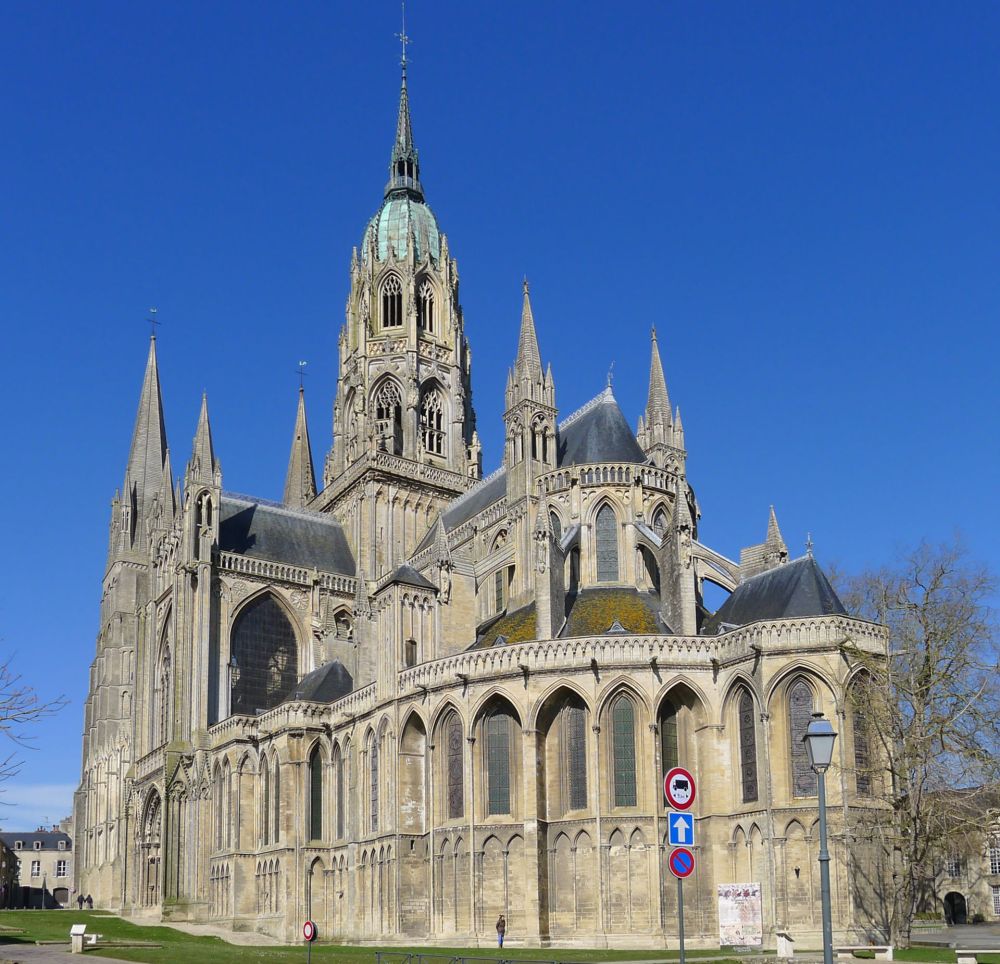
We went to the cathedral as well on the visit. It claims to be Norman romanesque with a gothic rebuild in 13th century. The later rebuild reminded me of Salisbury with the lancet style windows. Interestingly there were two layers of tracery; one holding the glass and one, skeletal, on the inside. Typical of French gothic cathedrals; soaring in height with huge flying buttresses, but fairly ordinary decoration. Lots of chapels, paintings and stained glass. The crypt was interesting with 16th century romanesque style paintings of an angel choir on the capitals.
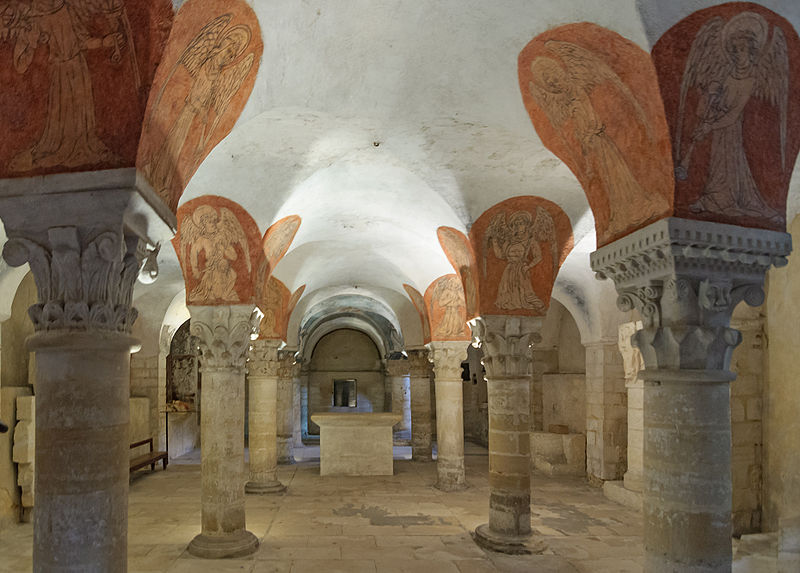
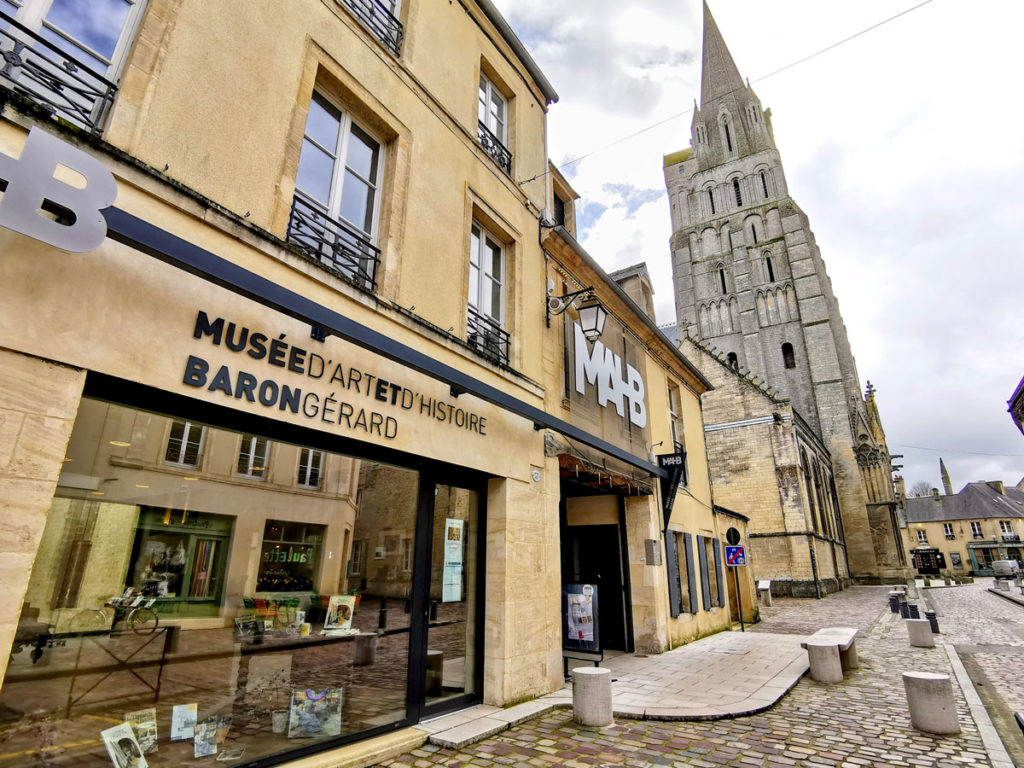
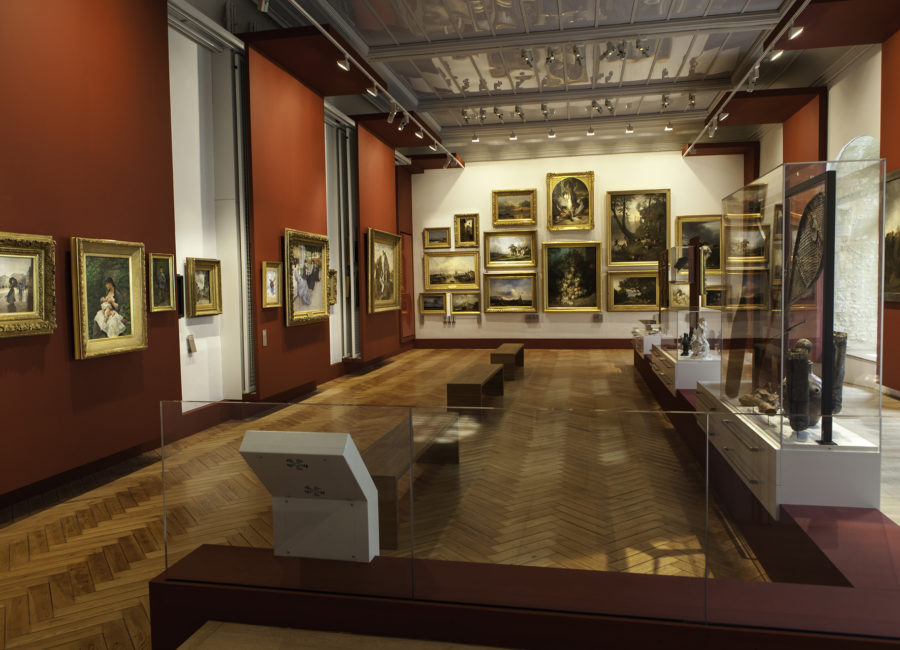
We also visited the Musée d’artes Histoire. This, again superbly curated display took the visitor from prehistoric Bayeux through to the 20th century in artifacts and paintings. Bayeux clearly has a rich history in lace making. While the art in the main was not premiership material it was a very good collection of high quality works – more than you would expect to see in a normal provincial collection.
While in Normandy also look out for all the D-Day and Liberation sites. Perhaps a reminder that if we don’t listen to history we are in serious trouble again.
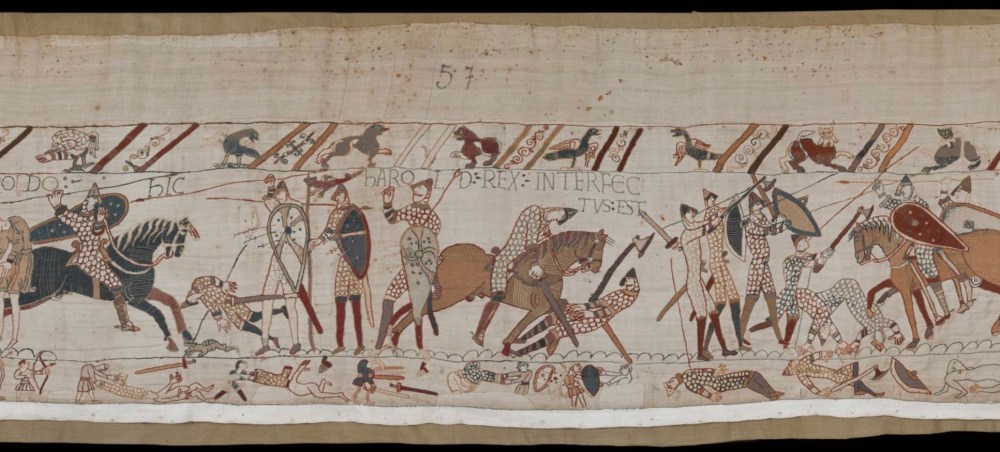
However seeing the tapestry confirms what all art historians know is that you need to see the object close up to really appreciate it as a work of art. Images can be excellent and the replica tapestry in Reading is a thoroughly good piece of work but if you are ever in Normandy go to Bayeux and see the original, wonderful piece of Norman Romanesque propaganda for real – you will not be disappointed!
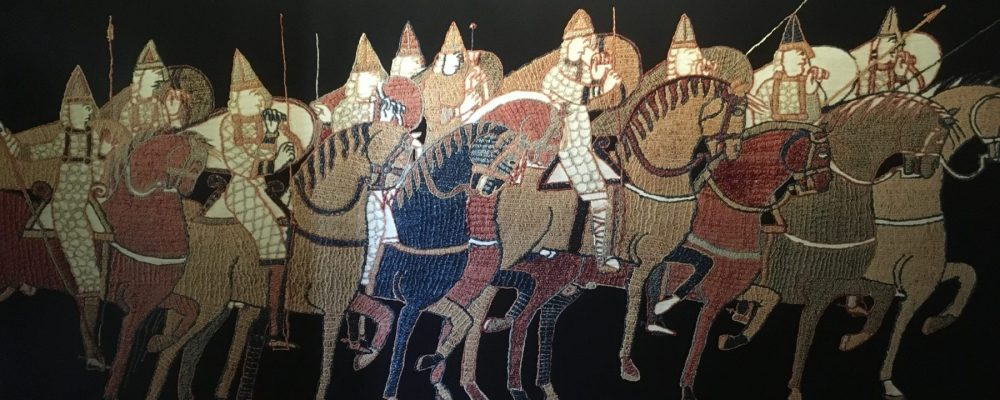
Images: Bayeux Museums
Thank you very much for this series of posts about a really great masterpiece
LikeLike
Thank you Luisa, time to move on now I think!!
LikeLiked by 1 person
😘
LikeLike
Fabulous visit to Bayeux with the tapestry a real highlight – a must see xx
LikeLike
Thank you Susie. Much to see and good food as well!
LikeLike
good read
LikeLike
Thanks, Tom
LikeLike